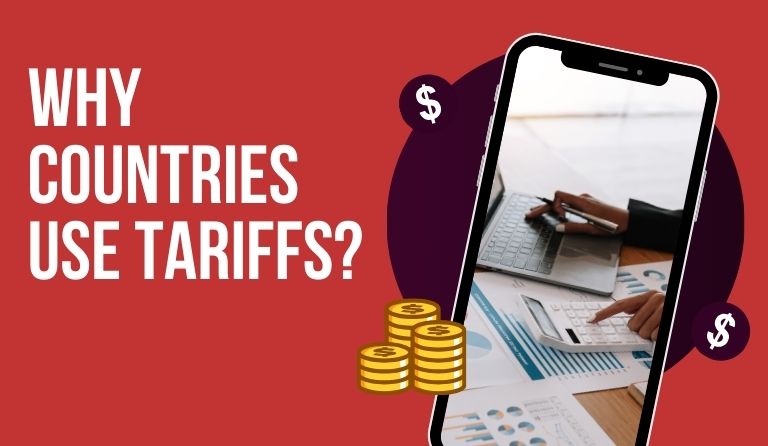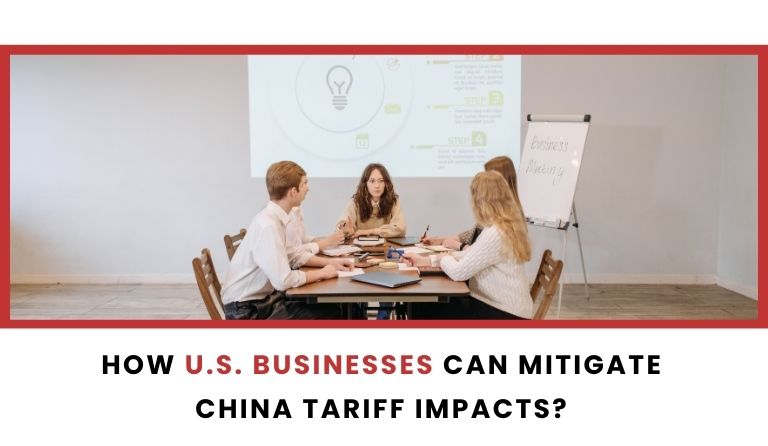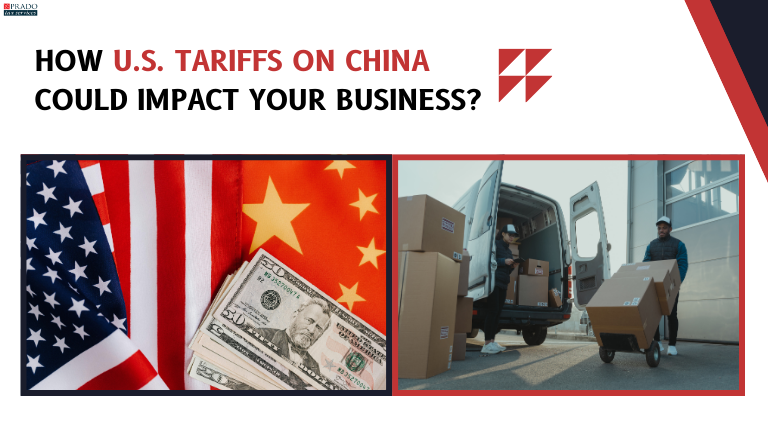Introduction
Tariffs play an essential role in international trade, functioning as a tariff tax that governments place on imported goods to control costs and influence market dynamics. With the planned rise in U.S. tariffs on China, businesses are feeling the effects on their bottom line. Understanding how these tariffs work, particularly the current China tariffs, is crucial for businesses that rely on international goods. This knowledge helps companies prepare for cost fluctuations and competitive shifts that come with heightened tariffs.
What is Tariff?
At its core, a tariff tax is an import duty imposed by a government on goods brought into the country. It is a cost added to imported products to make them more expensive compared to domestically produced items. This added cost can serve multiple purposes, from protecting local industries to generating revenue for the government.
Basic Example:
Let’s use dog food as an example:
- Before the tariff: A 30-pound bag of dog food imported from China costs $50. A US store sells it for $60.
- After a 25% tariff: The import cost becomes $50 + $12.50 (25% tariff) = $62.50. The store now sells it for $72.50.
Result: Dog food costs $12.50 more per month for the customer.
This means that when prices go up, customers may reconsider their options. They might choose between paying more for the same imported product or switching to a locally manufactured alternative if the prices are comparable. While this shift could help American businesses by encouraging more local purchases, it places a financial burden on customers regardless. The only way the customer could avoid this extra expense is if the seller absorbs the cost by lowering their own profit margins, which businesses may or may not be willing to do.
What are The Types of Tariffs?
Ad Valorem Tariff: Calculated as a percentage of the product’s value, this tariff tax impacts higher-value items more significantly. For example, a 20% ad valorem tariff on a $100 product would mean an additional $20 cost.
Specific Tariff: A fixed fee based on unit, weight, or volume, this tariff tax approach provides consistent charges regardless of product value. For example, a $5 specific tariff per item adds $5 to each imported product regardless of its value.
Why Do Countries Use Tariffs?
1. Economic Protection: A tariff tax protects local industries by making imported goods more expensive and thus less attractive to consumers.
2. Revenue Generation: Beyond its protective role, a tariff tax also provides governments with a revenue stream.

- Political and Strategic Reasons: Countries often use tariffs strategically to gain leverage in trade negotiations. For example, U.S. tariffs on China aim to put economic pressure on China, encouraging policy changes that favor U.S. economic interests.
Overview of U.S. Tariffs on China
The trade tensions between the U.S. and China have led to a series of tariffs that heavily impact industries and businesses reliant on Chinese imports.
Background of US-China Trade Tensions:
The U.S.-China trade war has been ongoing for years, with tariffs introduced on a wide array of Chinese goods. Key industries affected include technology, automotive, and agriculture, with both countries imposing retaliatory tariffs.
Recent Developments
The recent election campaign announcements suggest a return of stringent tariffs. The upcoming US government has proposed additional tariffs on China targeting sectors like renewable energy, technology, and manufacturing, intending to reduce dependency on Chinese imports and boost local business. The proposed “America First” approach could lead to even higher tariff taxes on Chinese products, intensifying the trade barriers that businesses face.
What is the impact of U.S. tariffs on China imports to businesses?
For businesses relying on Chinese imports, nearly around 16.5% of overall goods imported in 2022, U.S. tariffs on China represent a significant challenge. Here’s how these tariffs can affect different aspects of operations:
1. Increased Costs for Importers
Tariffs add a direct cost to imported goods, impacting the bottom line of businesses that depend on these imports. For example, a 25% tariff tax on electronics can significantly raise prices for tech companies sourcing parts from China.
2. Supply Chain Disruptions
Tariffs can disrupt established supply chains. Businesses that traditionally rely on Chinese suppliers may now need to explore alternative sources, such as Vietnam, Mexico, or other low-cost manufacturing hubs, which could involve a lengthy and costly adjustment period.
3. Potential Price Increases
With the additional tariff taxes, many companies may raise their prices to compensate, leading to increased costs for consumers. This can affect demand, particularly for price-sensitive goods, and potentially impact the competitive edge of businesses relying heavily on imported products.
4. Sector-Specific Impacts
Certain industries feel the effects of China tariffs more than others. For example:
- Technology: Electronics and telecommunications are heavily impacted as many components are sourced from China.
- Automotive: Car manufacturers may face increased costs on parts imported from China.
- Manufacturing: Any business relying on Chinese machinery or raw materials may see a spike in production costs due to these tariffs.
How U.S. Businesses Can Mitigate China Tariff Impacts?
Facing high tariffs, businesses can adopt several strategies to reduce the impact on their operations and profitability.
1. Diversifying Supply Chains
Companies can explore suppliers outside of China to minimize dependency and reduce exposure to China’s tariffs. Southeast Asian countries, such as Vietnam and Thailand, are potential alternatives for sourcing similar goods at competitive prices.

2. Negotiating with Suppliers
Businesses might work with Chinese suppliers to share some of the tariff burdens or negotiate longer-term contracts at lower rates to balance out the increased costs.
3. Exploring Tariff Exemptions
Certain tariff exemptions and relief programs exist for specific industries or products. Companies can consult trade experts to see if they qualify for any exemptions, which could help reduce the effective cost of U.S. tariffs on China.
4. Re-evaluating Pricing Strategies
Adjusting pricing and potentially streamlining product offerings can help businesses maintain their profit margins. While it may mean higher prices for consumers, strategic pricing can help mitigate the impact of tariff taxes.
Future Outlook: Possible Scenarios on US Tariffs on China
The future of U.S. tariffs on China will depend on political dynamics and the economic goals of both nations.
Potential Policy Changes: Shifts in U.S. political leadership could lead to changes in the tariff structure, either through increased tariffs or negotiations for reductions. However, with Trump’s renewed commitment to high tariffs, this outlook currently leans toward continuation or escalation.
Long-Term Implications for US-China Relations: Prolonged tariffs could encourage China to shift its trade partnerships to other global markets, reducing reliance on the U.S. As a result, American businesses heavily invested in Chinese imports may face long-term supply chain realignments.
Conclusion
Understanding tariffs, and especially the impact of U.S. tariffs on China, is essential for businesses in today’s global economy. With tariffs shaping the cost of imports, companies need to stay informed about these policies and consider proactive measures. By diversifying supply chains, negotiating with suppliers, and exploring exemptions, businesses can mitigate the impact of China tariffs. Remaining adaptable and informed will allow companies to navigate these challenges effectively, sustaining profitability in a complex international landscape.
For expert guidance on managing the financial impact of tariffs on your business, Prado Tax Services is here to help. With our specialized tax planning and advisory services, we work to optimize your tax strategy and minimize the impact of international trade policies on your finances. Discover how Prado Tax Services can assist your business in navigating complex tax challenges. Schedule a consultation with our team today to explore tailored solutions that align with your financial goals.
Disclaimer:
This blog offers general insights and their potential impact on businesses. It is not intended as professional advice. While every effort has been made to ensure accuracy, Prado Tax Services is not responsible for any errors or omissions, or for the results obtained from using this information. Policies are subject to change, and staying updated on the latest regulations is important. For any complaints or feedback please contact us at Prado Tax Services

